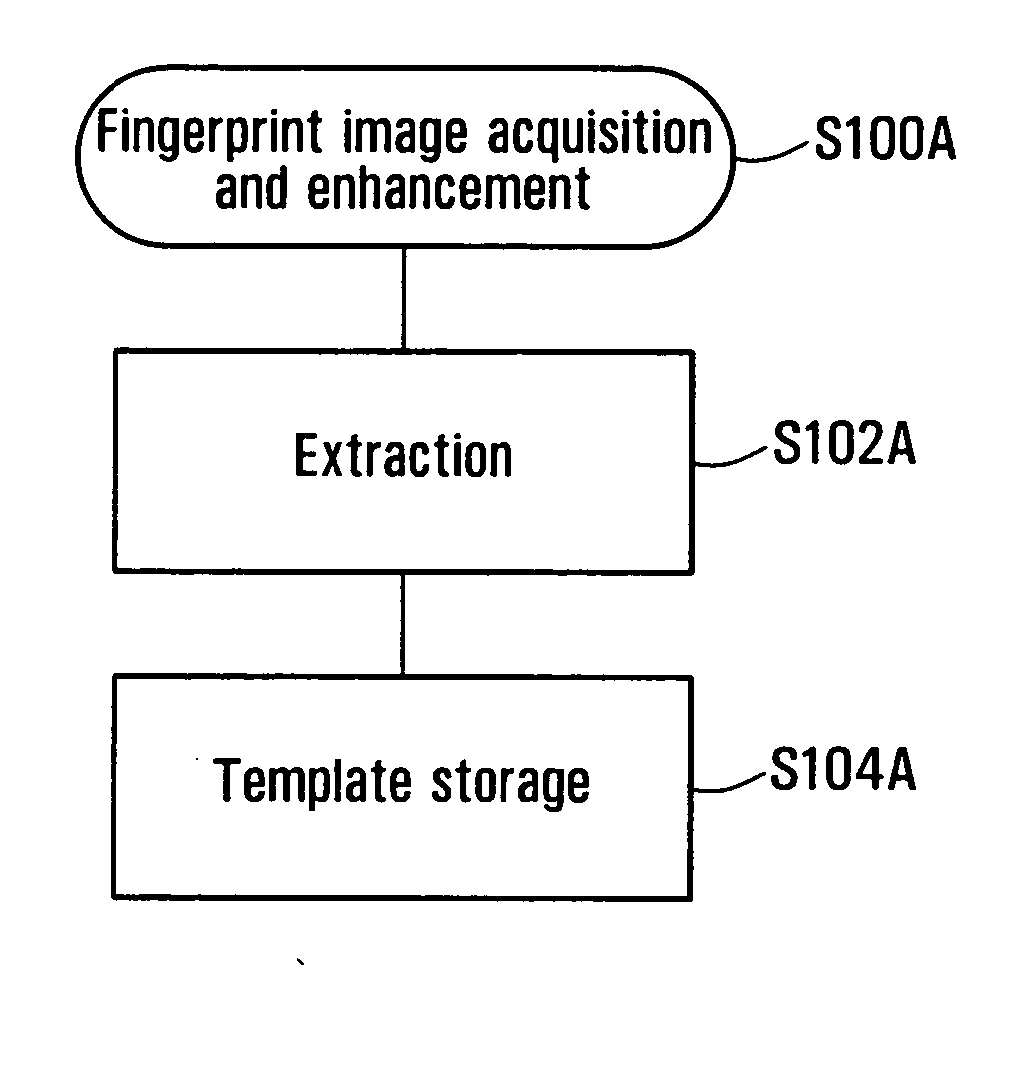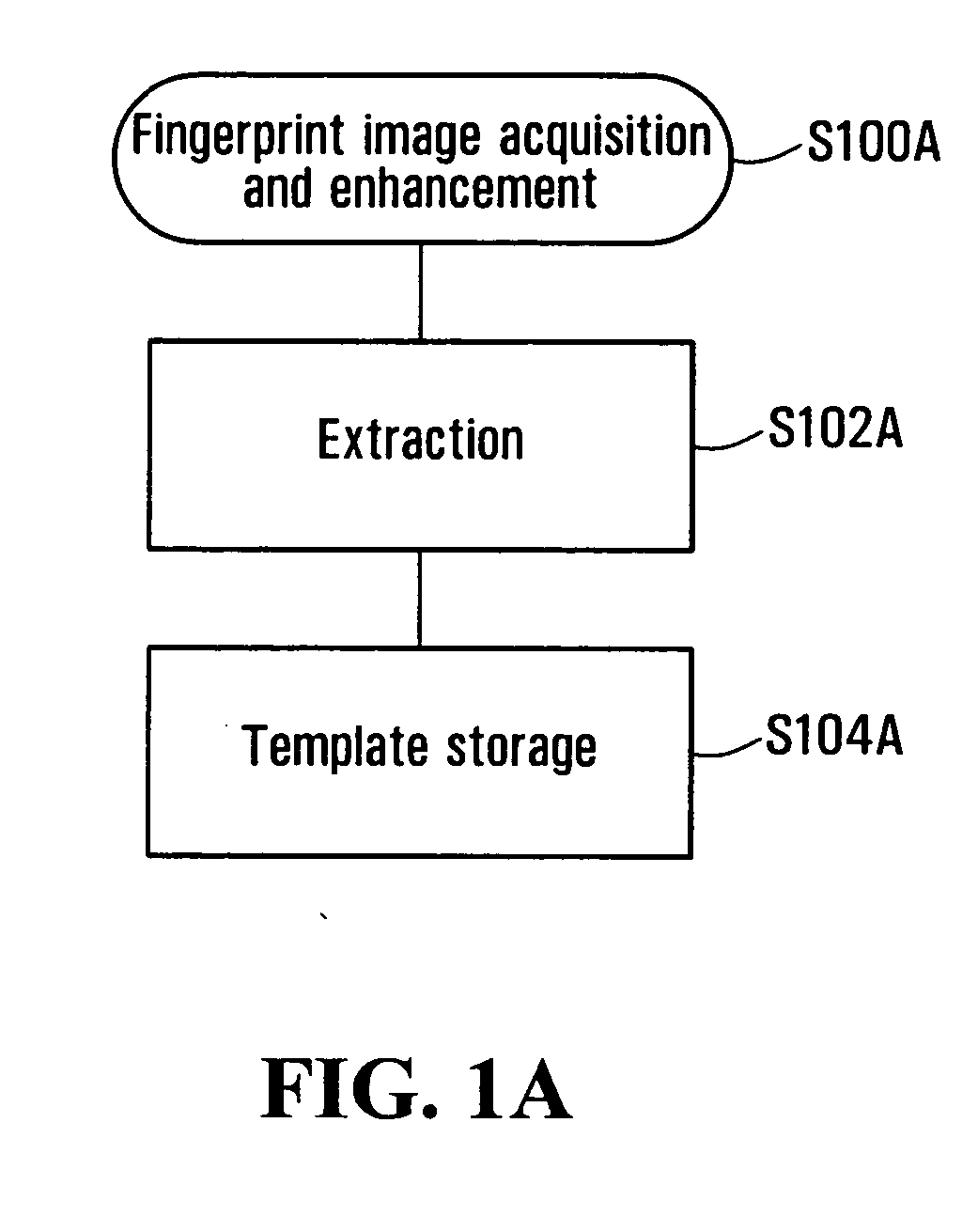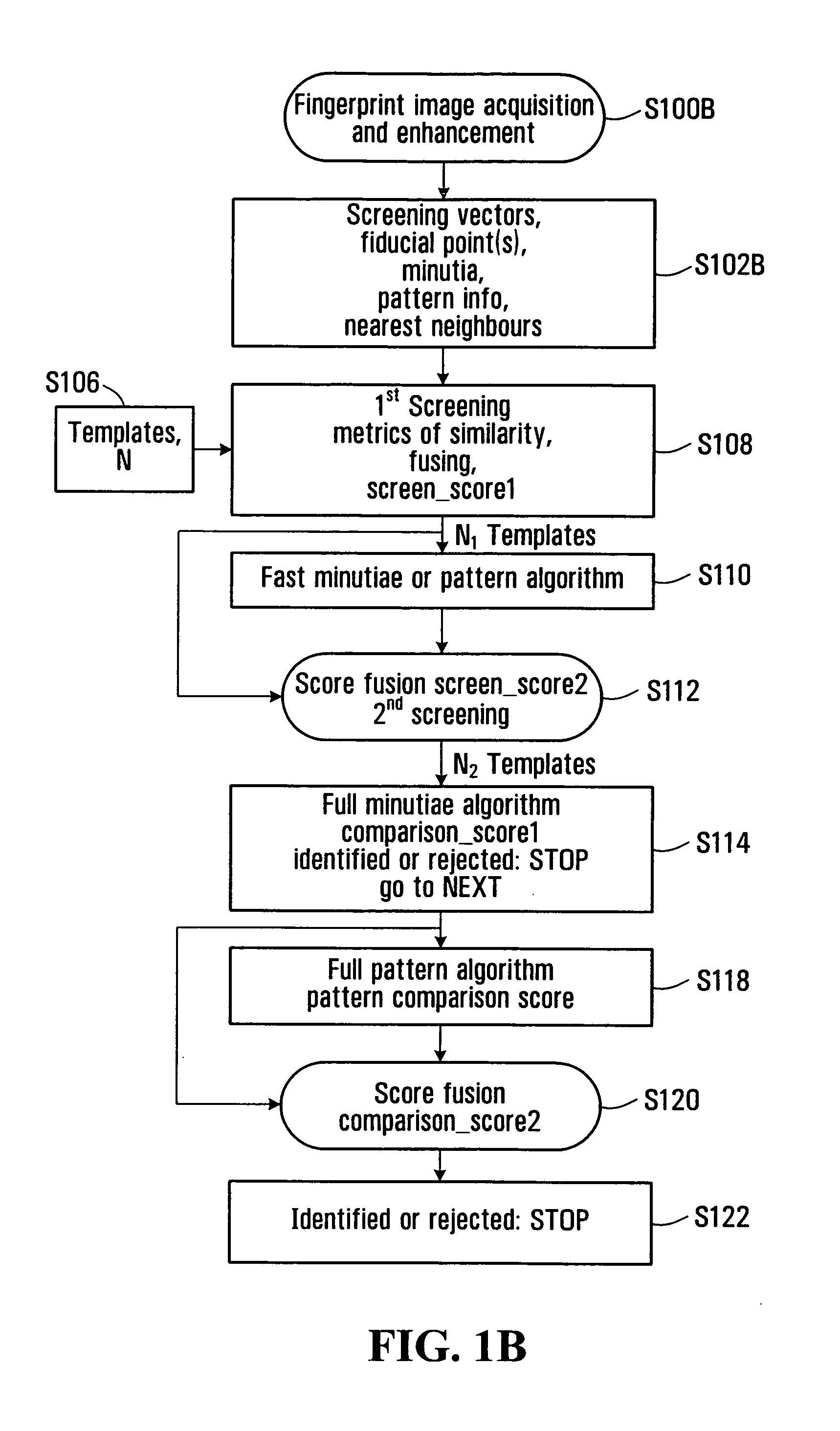Fingerprint identification system for access control
- Summary
- Abstract
- Description
- Claims
- Application Information
AI Technical Summary
Benefits of technology
Problems solved by technology
Method used
Image
Examples
Embodiment Construction
1. Overview
[0069] In a one-to-many fingerprint access control system, users are first enrolled. On enrollment of a user, one or more images of a fingerprint of the user are obtained and these images are used to create a template which is stored in a database. An individual who attempts access to the system provides one or more fingerprint images which are compared against all of the templates in the database. Based on the results of this comparison, a decision is made to either grant or deny access to the individual.
[0070] A high level overview of a method for fingerprint identification which may be used in access control is presented with reference to FIG. 1A, which illustrates steps taken in fingerprint enrollment and FIG. 1B, which illustrates steps taken in fingerprint identification. With reference to FIGS. 1A and 1B, any fingerprint identification or verification system starts with fingerprint image acquisition followed, in most cases, by image enhancement (S100A, S100B). T...
PUM
 Login to View More
Login to View More Abstract
Description
Claims
Application Information
 Login to View More
Login to View More - R&D
- Intellectual Property
- Life Sciences
- Materials
- Tech Scout
- Unparalleled Data Quality
- Higher Quality Content
- 60% Fewer Hallucinations
Browse by: Latest US Patents, China's latest patents, Technical Efficacy Thesaurus, Application Domain, Technology Topic, Popular Technical Reports.
© 2025 PatSnap. All rights reserved.Legal|Privacy policy|Modern Slavery Act Transparency Statement|Sitemap|About US| Contact US: help@patsnap.com



